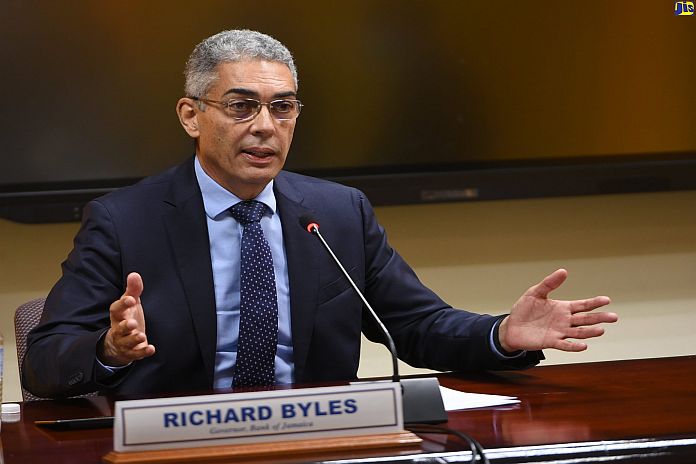By Chris Patterson
KINGSTON, Jamaica, (JIS) – The Bank of Jamaica ( BOJ) is projecting a continued reduction in domestic inflation during the last three months of this year and for most of 2024.
This was disclosed by Governor, Richard Byles, during the Central Bank’s quarterly monetary policy media briefing at the BOJ Auditorium in downtown Kingston on Monday August 21.
The projection represents a continuation of the general reduction in headline inflation (the general level of price increases measured over a one-year period), since the rate climbed to its highest level in recent years, reaching 11.8 percent in April 2022.
Byles cited the Statistical Institute of Jamaica (STATIN) report last week that headline inflation for July 2023 was 6.6 per cent. This was much lower than the peak inflation rate of 11.8 percent recorded in April 2022.
“Contributing to this significant general reduction since April 2022 were declines in the key drivers of inflation such as the price of grains, shipping costs and inflation expectations, as well as Bank of Jamaica’s tight monetary policy,” he outlined.
Byles said given the BOJ’s material success in controlling core inflation, the bank’s monetary policy committee announced its decision on August 19 to hold the policy interest rate paid on overnight balances at deposit-taking institutions at seven percent, maintain tight Jamaican dollar liquidity in the money market, and continue fostering relative stability in the foreign exchange market.
He said the general picture is one of success by the Central Bank in controlling inflation upwards of the last year, despite the rate registering small increases in recent months, moving from 5.8 percent in April 2023 to 6.1 percent in May, 6.3 percent in June, and 6.6 percent in July this year.
“Notwithstanding this uptick, inflation is forecasted to generally decelerate to the bank’s target range of four to six per cent by the December 2023 quarter and, with the exception of a few months in 2024, remain there,” he added.
Governor Byles said the outlook is consistent with global consensus forecasts for the path of certain commodity prices as well as the bank’s continued tight monetary policy stance.
He said as was projected, the July inflation out-turn was slightly higher than those for May and June 2023.
Byles noted that this was a reflection of the impact of the dry conditions at the start of the year and, more recently, hikes in the prices of domestic agricultural products.
“In addition, there have been ongoing increases in the price of meals consumed away from home, and the first-round effect of the adjustment in the national minimum wage was recorded in the June 2023 CPI (Consumer Price Index),” he added.
The bank anticipates that higher agricultural prices and education costs, as well as wage pressures, will contribute to inflation remaining a little above the target range for August and September.
Byles disclosed that while headline inflation had risen above the BOJ’s target range for June and July as anticipated, core inflation, which excludes food and fuel prices from the CPI, continues to fall, aided by the Bank’s management of the exchange rate and tightening of Jamaican dollar liquidity.
He said the annual core inflation rate at July 2023 was 5.2 per cent, and that it has consistently fallen over the past ten months.
Byles assured that the BOJ remains committed to achieving its primary mandate of preserving price stability by maintaining inflation levels that are low, stable and predictable.
He indicated that the bank will continue to closely monitor the global and domestic environments for potential threats to Jamaica’s inflation target and act accordingly.
“Among other factors, bank of Jamaica’s future monetary policy decisions will pay careful attention to the incoming data relating to the headwinds noted above, such as wage pressures and second-round effects of agricultural price inflation,” Governor Byles added.





